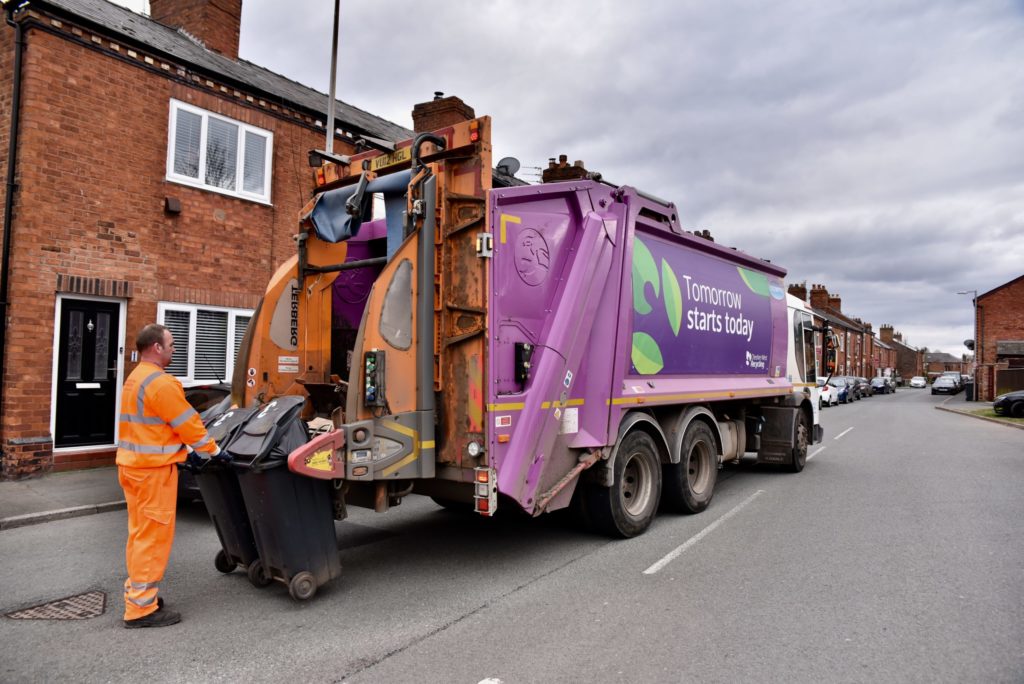As the UK's largest packaging compliance scheme, Valpak is waiting eagerly to find out what the government's current review of English waste policy will mean for packaging.
Packaging has been identified as one of the main areas of focus for the review and there have been whisperings of some possible significant changes in the pipeline.

We anticipate groups of members or different material sectors coming forward with different voluntary approaches to solve particular problems
Steve Gough, Valpak
To many businesses, such policy uncertainty might be unsettling. But Valpak chief executive Steve Gough explains that his company has been constantly evolving since the outset and has already diversified into a range of products and services such as recycling, data and consulting which stands it in good stead.
“We have a relationship with customers and an overview of the supply chain which puts us in a unique position,” he says. “We are putting forward to the review a number of scenarios and we believe we would be well placed to help deliver them.”
Voluntary
One of the key questions surrounding the review is whether the government might tear up the existing PRN producer responsibility system.
While Valpak does not know what the outcome will be, one scenario it envisages is the introduction of a two-pronged approach to tackling packaging waste.
Based on the government's decision to only slightly raise the packaging recycling targets for 2011 and 2012 (see letsrecycle.com story) and its penchant for voluntary agreements, the company believes that the PRN system will be retained after 2013, perhaps with only relatively low targets, but that voluntary agreements will also kick-in in a big way.
“We can see a path here where a certain part of the market is underpinned by the existing regulations,” says Mr Gough.
“On top of that we expect various voluntary agreements to be recommended. A number of our members are looking to us and saying if their contributions into meeting the mandatory packaging targets are going to reduce it gives them the opportunity to put more targeted efforts in to address some issues of particular importance to them and their customers. I can see an extremely positive outlook here.”
Voluntary
Valpak expects that any voluntary agreements put in place will not just tackle packaging, but address particular issues and problems – such as demand for recovered PET plastic from bottle manufacturers.
This would be in companies' interests because, unlike with the PRN system, the benefits would be clearly attributable to them and they would also have more control over the outcomes.
Mr Gough explains: “We anticipate groups of members or different material sectors coming forward with different voluntary approaches to solve particular problems. There had been indications by the previous administration's consultation of subdivided targets for plastics which is one way of addressing issues in the sector without losing the value of the current system”.
He stresses, however, that it will still be important to maintain the existing PRN system, as the mechanism enabled the UK to comply with its European target to recover 60% of packaging waste by December 31 2008 and report accurate figures to Brussels. This was at minimal cost to business and has provided an important subsidy to recycling, he adds.
Some in the sector have expressed fears that the whole PRN system could be scrapped, although Mr Gough says he thinks this is unlikely.
“It is vital that reprocessors continue to be supported,” he says. “It doesn't make sense to throw the baby out with the bathwater.”
ACP
“We are looking at moving beyond just weight. If you go too far with light-weighting then you get wastage in products and it only takes a relatively small amount of wastage to counteract any savings in packaging,” he says.
Data
Whatever the new regime that emerges, Valpak is already looking ahead to see how it might adapt. Recent trials carried out by the company illustrate one way in which it is already offering what is sees as added value.
Informed by Mr Gough's background in IT, the company is running trials whereby the data it collects to show that its members have complied with their packaging recycling obligations is not only sent to the Environment Agency but is also accessible by the companies themselves online.
This gives members the opportunity to see where improvements could be made and also achieves more transparency.
“Later this year customers will be able to access data by category line and be able to cut and slice it to find out what parts have the biggest cots with regards to their packaging bill or greatest weight,” Mr Gough explains. “We are getting real engagement on this and it is providing much more value for our members.”
Valpak also already has experience of voluntary agreements, and offers Courtauld Commitment reporting – a grocery sector pledge launched in 2005 to halt packaging growth – to its members. It has also worked alongside the likes of Danone and M&S to directly finance recycling facilities.
Business
At present, Valpak has around 100 employees at its head office in Stratford alongside 40 at its materials recycling facility in Preston. It also has a consulting arm – Valpak Consulting – based in Glasgow, which specialises in areas such as life cycle assessment.
The company currently holds 50% of the market for packaging producer compliance – with customers including Tesco, Unilever and M&S. It holds 15% of the WEEE market and 40/45% for batteries – counting Energizer amongst its members. The company also has a lot of smaller members which Mr Gough stresses are ‘equally important'.
So what is the company's key message?
“Everyone is now focusing on post 2013 for packaging because there is clarity until 2012,” says Mr Gough.
“What we are looking at and what everyone needs to be looking at is how we develop the best kind of system that is going to take this sector forward.”












Subscribe for free